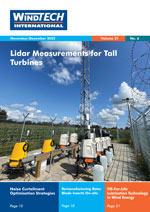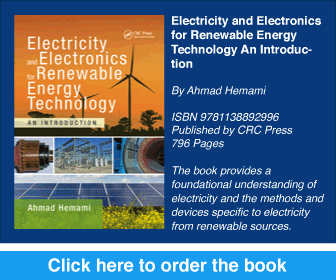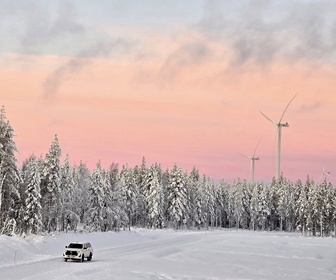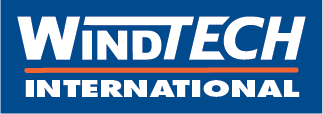- Category: Articles
A Solution for Radar Interference
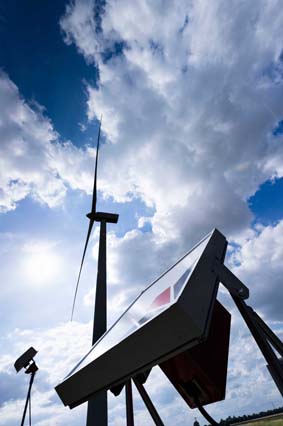 In the past year, the pages of Windtech International have been filled with excellent strategies to counter NIMBYism and the vested interests that sometimes lie behind such views. However, NIMBYism is by no means the only obstacle to wind farm development across the globe. Despite the tough targets for renewable energy production set by governments, huge numbers of wind farm proposals lie gathering dust in planning offices due to the concerns of airport air navigation service providers (ANSPs) and defence ministries.
In the past year, the pages of Windtech International have been filled with excellent strategies to counter NIMBYism and the vested interests that sometimes lie behind such views. However, NIMBYism is by no means the only obstacle to wind farm development across the globe. Despite the tough targets for renewable energy production set by governments, huge numbers of wind farm proposals lie gathering dust in planning offices due to the concerns of airport air navigation service providers (ANSPs) and defence ministries.
By David Crisp, CEO, Aveillant, UK
 In the past year, the pages of Windtech International have been filled with excellent strategies to counter NIMBYism and the vested interests that sometimes lie behind such views. However, NIMBYism is by no means the only obstacle to wind farm development across the globe. Despite the tough targets for renewable energy production set by governments, huge numbers of wind farm proposals lie gathering dust in planning offices due to the concerns of airport air navigation service providers (ANSPs) and defence ministries.
In the past year, the pages of Windtech International have been filled with excellent strategies to counter NIMBYism and the vested interests that sometimes lie behind such views. However, NIMBYism is by no means the only obstacle to wind farm development across the globe. Despite the tough targets for renewable energy production set by governments, huge numbers of wind farm proposals lie gathering dust in planning offices due to the concerns of airport air navigation service providers (ANSPs) and defence ministries.By David Crisp, CEO, Aveillant, UK
- Category: Articles
A New Offshore Wind Atlas
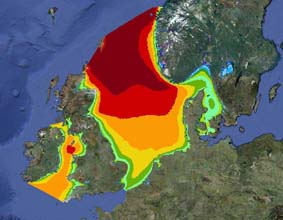 In 2008 an EC FP7 funded project, NORSEWInD, was launched with the aim of addressing the lack of data available for offshore wind development. The project's aim was to provide a new offshore wind atlas for the Irish, North and Baltic Seas. This article follows on from an earlier article, published in the October issue 2008 of Windtech International, introducing the NORSEWInD project.
In 2008 an EC FP7 funded project, NORSEWInD, was launched with the aim of addressing the lack of data available for offshore wind development. The project's aim was to provide a new offshore wind atlas for the Irish, North and Baltic Seas. This article follows on from an earlier article, published in the October issue 2008 of Windtech International, introducing the NORSEWInD project.
By Andy Oldroyd, Technical Director and Co-founder, Oldbaum Services, UK
 In 2008 an EC FP7 funded project, NORSEWInD, was launched with the aim of addressing the lack of data available for offshore wind development. The project's aim was to provide a new offshore wind atlas for the Irish, North and Baltic Seas. This article follows on from an earlier article, published in the October issue 2008 of Windtech International, introducing the NORSEWInD project.
In 2008 an EC FP7 funded project, NORSEWInD, was launched with the aim of addressing the lack of data available for offshore wind development. The project's aim was to provide a new offshore wind atlas for the Irish, North and Baltic Seas. This article follows on from an earlier article, published in the October issue 2008 of Windtech International, introducing the NORSEWInD project.By Andy Oldroyd, Technical Director and Co-founder, Oldbaum Services, UK
- Category: Articles
Lowering the Cost of Wind Power to Better Compete
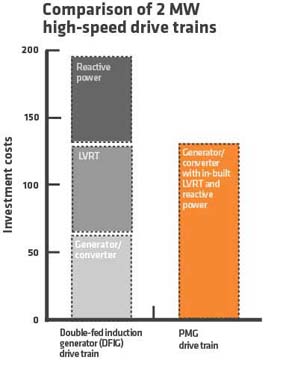 As renewable sources such as wind and solar compete as serious contenders in generating more energy for the world, the energy produced must be as cheap, if not cheaper, than that of fossil-based sources. In addition, the quality of energy produced must be equally as high. The formula for lowering the cost of energy from any source is ultimately very simple: lower overall capital investment costs, equipment lifetime operation and maintenance (O&M) costs and fuel costs, while boosting the amount of energy generated. This formula becomes even more attractive with wind and solar – as the cost of fuel is already free. In the end, it all comes down to five main drivers that have a major effect on lowering the cost of energy with renewable sources.
As renewable sources such as wind and solar compete as serious contenders in generating more energy for the world, the energy produced must be as cheap, if not cheaper, than that of fossil-based sources. In addition, the quality of energy produced must be equally as high. The formula for lowering the cost of energy from any source is ultimately very simple: lower overall capital investment costs, equipment lifetime operation and maintenance (O&M) costs and fuel costs, while boosting the amount of energy generated. This formula becomes even more attractive with wind and solar – as the cost of fuel is already free. In the end, it all comes down to five main drivers that have a major effect on lowering the cost of energy with renewable sources.
By Jussi Vanhanen, Director, Sales and Marketing, The Switch, Finland
 As renewable sources such as wind and solar compete as serious contenders in generating more energy for the world, the energy produced must be as cheap, if not cheaper, than that of fossil-based sources. In addition, the quality of energy produced must be equally as high. The formula for lowering the cost of energy from any source is ultimately very simple: lower overall capital investment costs, equipment lifetime operation and maintenance (O&M) costs and fuel costs, while boosting the amount of energy generated. This formula becomes even more attractive with wind and solar – as the cost of fuel is already free. In the end, it all comes down to five main drivers that have a major effect on lowering the cost of energy with renewable sources.
As renewable sources such as wind and solar compete as serious contenders in generating more energy for the world, the energy produced must be as cheap, if not cheaper, than that of fossil-based sources. In addition, the quality of energy produced must be equally as high. The formula for lowering the cost of energy from any source is ultimately very simple: lower overall capital investment costs, equipment lifetime operation and maintenance (O&M) costs and fuel costs, while boosting the amount of energy generated. This formula becomes even more attractive with wind and solar – as the cost of fuel is already free. In the end, it all comes down to five main drivers that have a major effect on lowering the cost of energy with renewable sources.By Jussi Vanhanen, Director, Sales and Marketing, The Switch, Finland
- Category: Articles
Making Inspection More Cost-Effective
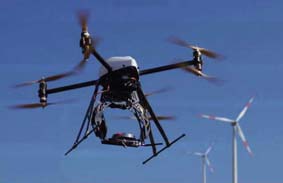 In this article, Marcel Bruins explains how rotor blades can be inspected using drones. The idea of performing rotor blade inspections in a safer and more cost-effective way was conceived a few years ago, when he was still working for a rotor blade repair and maintenance company (previously Aerpac in Almelo, The Netherlands, which was later taken over by GE Wind Energy). Marcel currently works as a project manager for the International Business Support department, at Availon GmbH, the largest independent service provider in Europe.
In this article, Marcel Bruins explains how rotor blades can be inspected using drones. The idea of performing rotor blade inspections in a safer and more cost-effective way was conceived a few years ago, when he was still working for a rotor blade repair and maintenance company (previously Aerpac in Almelo, The Netherlands, which was later taken over by GE Wind Energy). Marcel currently works as a project manager for the International Business Support department, at Availon GmbH, the largest independent service provider in Europe.
By Marcel Bruins, International Project Manager, Availon, Germany
 In this article, Marcel Bruins explains how rotor blades can be inspected using drones. The idea of performing rotor blade inspections in a safer and more cost-effective way was conceived a few years ago, when he was still working for a rotor blade repair and maintenance company (previously Aerpac in Almelo, The Netherlands, which was later taken over by GE Wind Energy). Marcel currently works as a project manager for the International Business Support department, at Availon GmbH, the largest independent service provider in Europe.
In this article, Marcel Bruins explains how rotor blades can be inspected using drones. The idea of performing rotor blade inspections in a safer and more cost-effective way was conceived a few years ago, when he was still working for a rotor blade repair and maintenance company (previously Aerpac in Almelo, The Netherlands, which was later taken over by GE Wind Energy). Marcel currently works as a project manager for the International Business Support department, at Availon GmbH, the largest independent service provider in Europe.By Marcel Bruins, International Project Manager, Availon, Germany
- Category: Articles
The New Control Platform
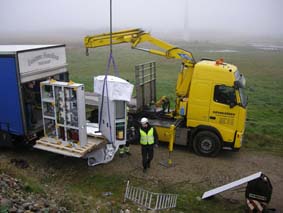 kk-electronic has been an active participant in the wind power industry since its early days and we have been able to influence the development of the industry with our products and innovations. Our first control system (in 1978) gave the ability to connect to the grid, and since then five generations of products have refined and optimised the performance of control systems and wind turbines. The newest solution from kk-electronic – the ‘C’ control platform – was introduced in April 2012. This new control platform breaks with traditional thinking about control systems, since it adds several new dimensions to the product category.
kk-electronic has been an active participant in the wind power industry since its early days and we have been able to influence the development of the industry with our products and innovations. Our first control system (in 1978) gave the ability to connect to the grid, and since then five generations of products have refined and optimised the performance of control systems and wind turbines. The newest solution from kk-electronic – the ‘C’ control platform – was introduced in April 2012. This new control platform breaks with traditional thinking about control systems, since it adds several new dimensions to the product category.
By Erik Gammelgaard, Marketing Manager, kk-electronic, Denmark
 kk-electronic has been an active participant in the wind power industry since its early days and we have been able to influence the development of the industry with our products and innovations. Our first control system (in 1978) gave the ability to connect to the grid, and since then five generations of products have refined and optimised the performance of control systems and wind turbines. The newest solution from kk-electronic – the ‘C’ control platform – was introduced in April 2012. This new control platform breaks with traditional thinking about control systems, since it adds several new dimensions to the product category.
kk-electronic has been an active participant in the wind power industry since its early days and we have been able to influence the development of the industry with our products and innovations. Our first control system (in 1978) gave the ability to connect to the grid, and since then five generations of products have refined and optimised the performance of control systems and wind turbines. The newest solution from kk-electronic – the ‘C’ control platform – was introduced in April 2012. This new control platform breaks with traditional thinking about control systems, since it adds several new dimensions to the product category.By Erik Gammelgaard, Marketing Manager, kk-electronic, Denmark
- Category: Articles
Potential and Limitations
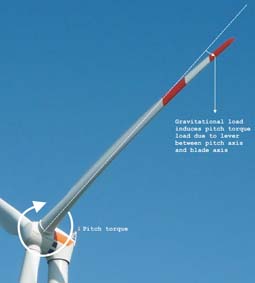 During the last two decades of commercial wind turbine development one of the most obvious trends has been the growth in the size of turbines and the rotor blades to drive them. Along with this the average rotor power loading has decreased to values about half those of ten years ago. Some of the recent turbines are new models especially designed for low wind speed regimes, but most of them are existing wind turbines equipped with larger and larger rotor blades. The following article gives some insight into the possibilities and limitations of such turbine derivatives and will pay particular attention to the need to alter other turbine components as a result of the increase in the rotor diameter.
During the last two decades of commercial wind turbine development one of the most obvious trends has been the growth in the size of turbines and the rotor blades to drive them. Along with this the average rotor power loading has decreased to values about half those of ten years ago. Some of the recent turbines are new models especially designed for low wind speed regimes, but most of them are existing wind turbines equipped with larger and larger rotor blades. The following article gives some insight into the possibilities and limitations of such turbine derivatives and will pay particular attention to the need to alter other turbine components as a result of the increase in the rotor diameter.
By Albrecht Kantelberg and Roland Stoer, Managing Directors, WINDnovation Engineering Solutions, Berlin, Germany
 During the last two decades of commercial wind turbine development one of the most obvious trends has been the growth in the size of turbines and the rotor blades to drive them. Along with this the average rotor power loading has decreased to values about half those of ten years ago. Some of the recent turbines are new models especially designed for low wind speed regimes, but most of them are existing wind turbines equipped with larger and larger rotor blades. The following article gives some insight into the possibilities and limitations of such turbine derivatives and will pay particular attention to the need to alter other turbine components as a result of the increase in the rotor diameter.
During the last two decades of commercial wind turbine development one of the most obvious trends has been the growth in the size of turbines and the rotor blades to drive them. Along with this the average rotor power loading has decreased to values about half those of ten years ago. Some of the recent turbines are new models especially designed for low wind speed regimes, but most of them are existing wind turbines equipped with larger and larger rotor blades. The following article gives some insight into the possibilities and limitations of such turbine derivatives and will pay particular attention to the need to alter other turbine components as a result of the increase in the rotor diameter.By Albrecht Kantelberg and Roland Stoer, Managing Directors, WINDnovation Engineering Solutions, Berlin, Germany
- Category: Articles
Load Comparisons between a Partial Pitch Two-Bladed Turbine and a Three-Bladed Turbine
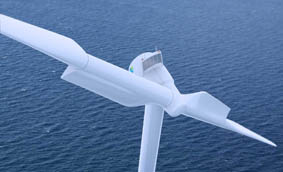 This article shows the potential for reducing extreme loads with an innovative design of wind turbine, a partial pitch two-bladed concept turbine. The most extreme conditions to test a turbine are considered to be stand-still combined with a grid failure in which the wind comes from all directions from 0 to 360 degrees. All aeroelastic load simulations are done by using the aeroelastic code HAWC2. From the load comparisons between the partial pitch two-bladed turbine and a conventional three-bladed turbine it is observed that the partial pitch two-bladed turbine can reduce the extreme tower bottom bending moment by approximately 33% compared to the three-bladed turbine.
This article shows the potential for reducing extreme loads with an innovative design of wind turbine, a partial pitch two-bladed concept turbine. The most extreme conditions to test a turbine are considered to be stand-still combined with a grid failure in which the wind comes from all directions from 0 to 360 degrees. All aeroelastic load simulations are done by using the aeroelastic code HAWC2. From the load comparisons between the partial pitch two-bladed turbine and a conventional three-bladed turbine it is observed that the partial pitch two-bladed turbine can reduce the extreme tower bottom bending moment by approximately 33% compared to the three-bladed turbine.
By Taeseong Kim, Wind Energy Department, Technical University of Denmark Risø Campus, Denmark
 This article shows the potential for reducing extreme loads with an innovative design of wind turbine, a partial pitch two-bladed concept turbine. The most extreme conditions to test a turbine are considered to be stand-still combined with a grid failure in which the wind comes from all directions from 0 to 360 degrees. All aeroelastic load simulations are done by using the aeroelastic code HAWC2. From the load comparisons between the partial pitch two-bladed turbine and a conventional three-bladed turbine it is observed that the partial pitch two-bladed turbine can reduce the extreme tower bottom bending moment by approximately 33% compared to the three-bladed turbine.
This article shows the potential for reducing extreme loads with an innovative design of wind turbine, a partial pitch two-bladed concept turbine. The most extreme conditions to test a turbine are considered to be stand-still combined with a grid failure in which the wind comes from all directions from 0 to 360 degrees. All aeroelastic load simulations are done by using the aeroelastic code HAWC2. From the load comparisons between the partial pitch two-bladed turbine and a conventional three-bladed turbine it is observed that the partial pitch two-bladed turbine can reduce the extreme tower bottom bending moment by approximately 33% compared to the three-bladed turbine.By Taeseong Kim, Wind Energy Department, Technical University of Denmark Risø Campus, Denmark
Use of cookies
Windtech International wants to make your visit to our website as pleasant as possible. That is why we place cookies on your computer that remember your preferences. With anonymous information about your site use you also help us to improve the website. Of course we will ask for your permission first. Click Accept to use all functions of the Windtech International website.



